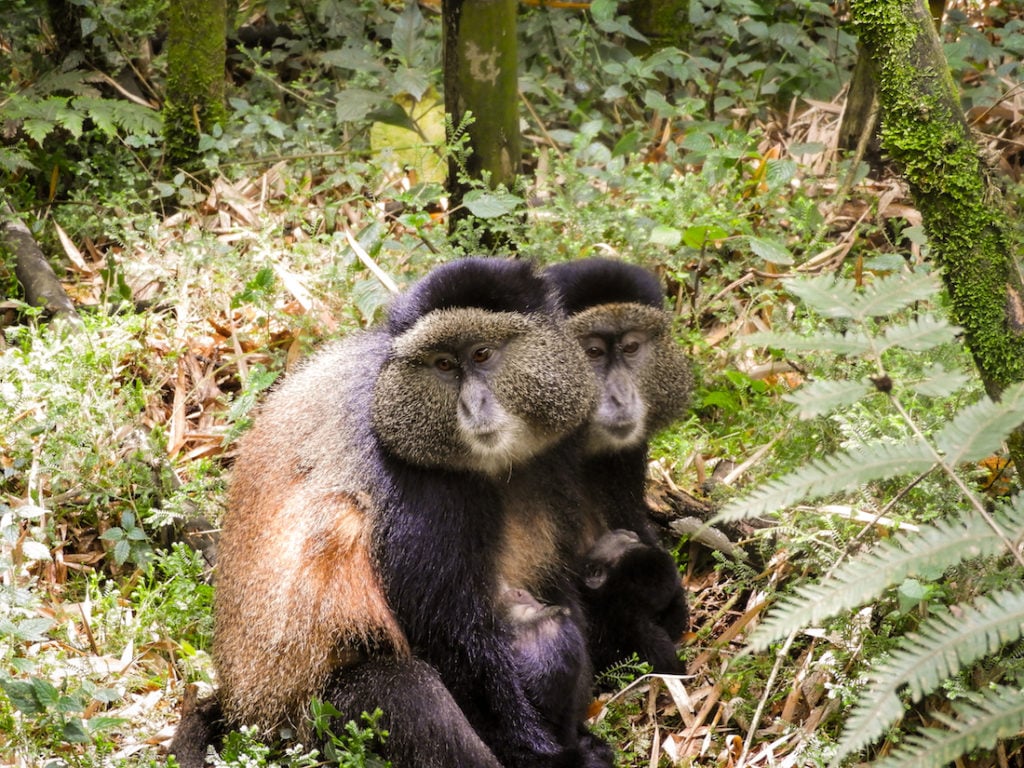The Dian Fossey Gorilla Fund has studied golden monkeys in Rwanda for years, because they are a critical part of gorilla habitat and the only other primate living there, as well as a fascinating facet of the forest’s biodiversity. They are also an endangered species and it is believed that their population is declining.
This year, Fossey Fund/University of Chester researcher Sue Wiper, who is doing her doctoral studies on golden monkey social systems and behavior, has begun to collect important information and is working on identifying individuals within their large groups. Wiper arrived in Rwanda during the spring breeding season and now is able to identify the males and some of the females in the group that she studies, which is called the Kabatwa group.

Unlike the gorillas, who breed throughout the year, the golden monkeys we’ve observed confine their breeding to a distinct season. The Kabatwa group were mating in the spring from March-May, and females who bred then are giving birth this fall, after an approximate gestation period of 6 months.
Now that the fall births are occurring, Wiper is able to watch the females getting ready for motherhood and to observe their maternal behaviors once the infants arrive. And she’s been able to get some great photos and videos of these elegant and endearing primates.
“Newborns of any endangered species are a magical addition,” Wiper says, since they add to the dwindling populations. “Every golden monkey birth is a great sign of their reproduction ability and population growth, so it’s really fantastic to watch,” she adds.






